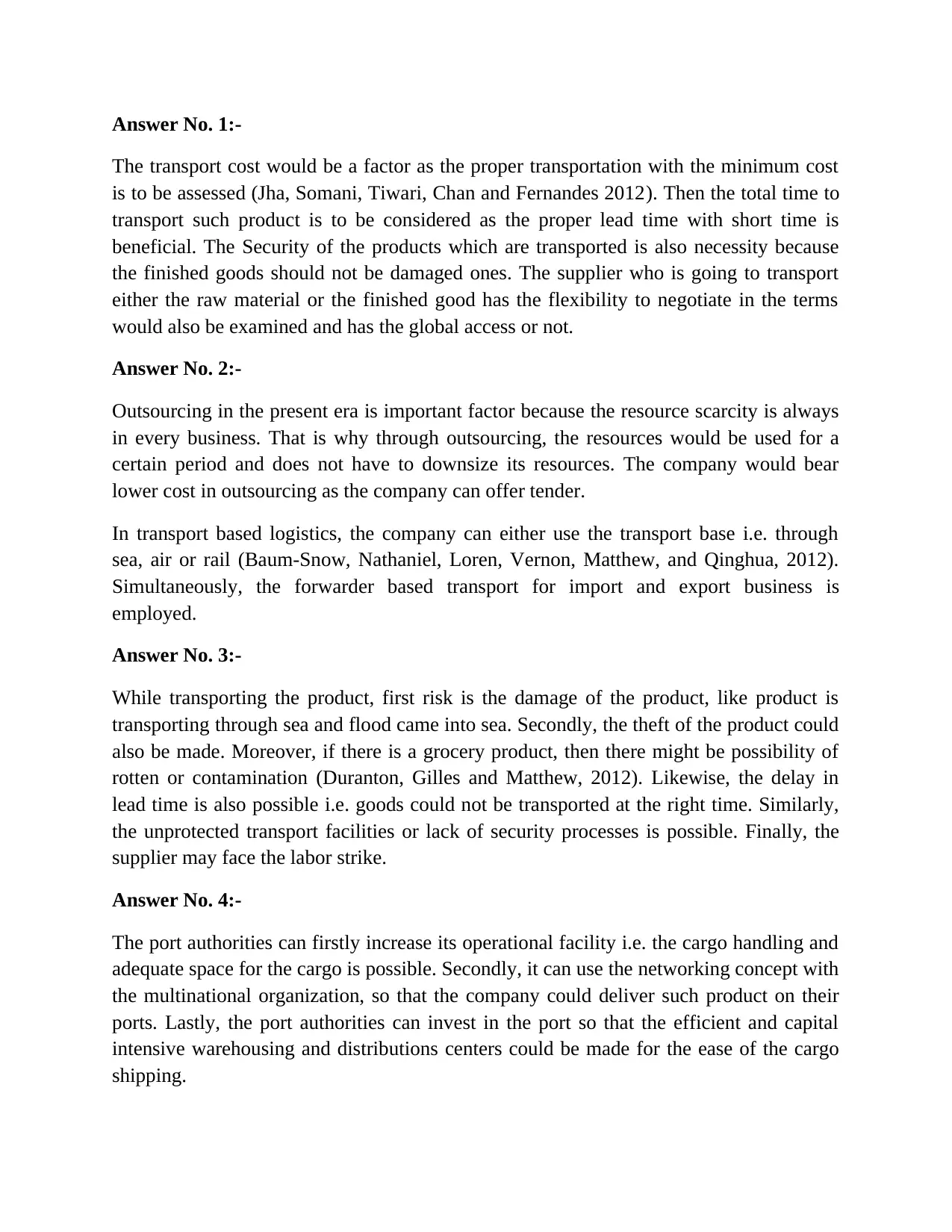BUS101: Selection Criteria for Transportation Carrier Management
VerifiedAdded on 2022/11/26
|2
|789
|389
Homework Assignment
AI Summary
This assignment addresses the selection criteria for choosing appropriate transportation carriers to manage transportation needs, focusing on five key criteria. The assignment emphasizes the importance of transport cost, total transit time and its reliability, and the security of transported products. It also highlights the significance of carrier capability, including equipment and technology, willingness to negotiate terms, and global reach, and discusses how these factors influence the decision-making process. The assignment also touches upon the broader context of outsourcing in logistics, including the use of different transport modes (sea, air, rail), and the risks involved in product transportation such as damage, theft, and delays. The assignment further explores how port authorities can improve operational facilities, network with multinational organizations, and invest in efficient warehousing and distribution centers. Finally, it examines challenges like fuel costs, competition in boundary-less markets, and labor costs, offering a comprehensive view of transportation management.
1 out of 2



![[object Object]](/_next/static/media/star-bottom.7253800d.svg)